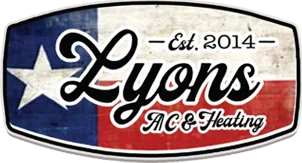Ensuring a comfortable environment in a light commercial facility is crucial for both employees and customers. One of the key elements to achieve this is an effective heating system. Installing a new furnace in a commercial space requires careful planning and execution. Understanding the essential steps involved in the process can help you make informed decisions and ensure a successful installation.
Assessing Your Facility’s Heating Needs
Before starting the furnace installation process, it’s critical to assess the specific heating requirements of your commercial facility. Every building is different, and factors like size, design, and usage patterns all play significant roles in determining the appropriate heating solution.
First, consider the total square footage of the area that needs heating. Larger spaces will naturally demand more powerful furnaces to maintain a consistent and comfortable temperature. Pay attention to ceiling height as well; taller ceilings may require additional heating capacity.
Next, evaluate the building’s insulation and any existing ductwork. Proper insulation can significantly affect the efficiency of your furnace, ensuring that heat is retained within the building. Our professionals can inspect your current insulation and duct system to identify any areas needing improvement. This evaluation is essential for choosing a furnace that will operate efficiently within the existing setup.
Finally, consider the specific heating needs of different zones within the facility. Some areas may require more heat than others, depending on their use. For example, storage rooms may need less heating compared to office spaces or retail areas where customers and employees spend most of their time. Zone-specific assessments help in selecting a furnace that can provide balanced heating throughout the facility.
Choosing the Right Furnace for Light Commercial Use
Selecting the appropriate furnace for your light commercial facility is a crucial step in ensuring effective and efficient heating. Various factors should be considered to make the best choice for your specific needs.
One of the primary factors to consider is the energy efficiency rating of the furnace. High-efficiency models may have a higher upfront cost but can offer significant energy savings over time. These models are designed to use less fuel to produce the same amount of heat, which translates to lower energy bills.
Another key consideration is the type of furnace that would be most suitable. Options include gas, oil, and electric furnaces, each with its own set of advantages and limitations. Gas furnaces are often preferred for their efficiency and lower operating costs. Electric furnaces, while generally more expensive to operate, may be easier to install and maintain. Our professionals can help you weigh these options based on your specific needs and budget.
It’s also important to factor in the capacity of the furnace. A unit that is too small will struggle to heat the space adequately, while one that is too large may cycle on and off too frequently, leading to inefficient operation and higher wear and tear. Proper sizing is essential for efficient performance and longevity.
Lastly, consider any additional features that may benefit your facility. Modern furnaces come with various features like variable speed blowers, programmable thermostats, and zoning capabilities, which can enhance comfort and control. Our technicians can provide expert recommendations to ensure you select a furnace that aligns with your facility’s heating requirements.
Steps in the Furnace Installation Process
The furnace installation process involves several critical steps to ensure that the unit operates efficiently and safely. Each step is essential in ensuring a successful installation and long-term performance.
First, our professionals will prepare the installation site by clearing the area and making sure it meets the necessary code requirements. Proper preparation helps prevent future issues and ensures that the furnace installation proceeds smoothly.
Next, they will install the furnace unit itself. This phase involves placing the furnace in the designated area and securing it properly. The technicians will then connect the furnace to the ductwork, gas lines, and electrical systems. Proper connections are vital for the furnace’s efficiency and safety.
Following these steps, our technicians will test the furnace to make sure it operates correctly. They will check for correct airflow, proper fuel combustion, and ensure that all connections are secure and leak-free. Any issues detected during testing will be addressed immediately.
After the initial testing, the technicians will make any necessary adjustments to optimize the system’s performance. This fine-tuning helps in achieving the best efficiency and comfort levels for your facility. Once all steps are completed, the furnace will be ready for use, providing consistent and reliable heating throughout your space.
Post-Installation Maintenance and Support
After the furnace installation is complete, post-installation maintenance and support are crucial in ensuring the unit’s long-term efficiency and reliability. Regular maintenance helps in identifying potential issues early and extending the lifespan of the furnace.
One of the primary aspects of post-installation maintenance is scheduling regular check-ups. Our professionals can perform routine inspections to ensure the furnace operates at peak performance. These inspections typically include checking and replacing filters, inspecting fuel lines, and ensuring optimal airflow.
In addition to regular check-ups, it’s essential to address any furnace repair needs promptly. Even minor issues can lead to significant problems if left unattended. Our technicians are equipped to handle any repairs needed to keep your furnace running smoothly.
Moreover, keeping an eye on the furnace’s performance can also help in deciding if and when a furnace replacement might be necessary. Older units that require frequent repairs or show signs of reduced efficiency might be candidates for replacement. Additionally, considering alternatives like heat pump installation can offer improved energy efficiency and year-round comfort.
Our support doesn’t end with installation; we remain committed to providing ongoing assistance to ensure your heating system performs well. Effective post-installation maintenance and support help in achieving consistent comfort and efficiency in your commercial space.
Conclusion
Installing a furnace in a light commercial facility involves several critical steps, from assessing the heating needs and choosing the right furnace to ensuring proper installation and ongoing maintenance. Each phase plays a fundamental role in providing a comfortable and efficient environment for your business operations.
Our professionals at Lyons AC & Heating are dedicated to providing top-notch service from start to finish. Whether you’re considering a new furnace installation in Cleveland or need support with your existing system, we are here to help. Contact us today to schedule a consultation or service appointment!



